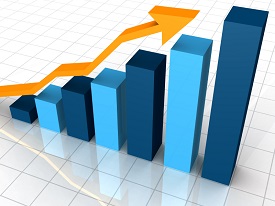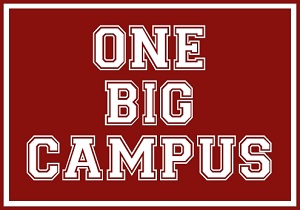The Rising Cost of College
 Each year as the high school graduation season approaches, many people are likely experiencing a few panic attacks at the thought of paying for college. With the rising cost of college education, more families are highly stressed about how to make it happen. According to government data, higher education costs are increasing at a faster rate than inflation. In 2014, the tuition and fees for private schools rose 3.7% while in-state residents at public schools climbed 2.9%. However, inflation only rose by 1.4% during the same year. College Board also reported that the average cost of college in 2014 (including tuition, room, and board) was $42,419.00 for a private school, $32,762.00 for out-of-state residents at public schools, and $18,943.00 for in-state residents at public schools. Reported by Best Value Schools, the overall cost of a college education is almost "4.5 times as expensive as it was 30 years ago." Putting it into perspective, college tuition and fees have risen by 1,120 % since 1978, but food has increased at the rate of 244% and medical expenses by 601%, according to USA Today. Hence, the panic attacks.
Each year as the high school graduation season approaches, many people are likely experiencing a few panic attacks at the thought of paying for college. With the rising cost of college education, more families are highly stressed about how to make it happen. According to government data, higher education costs are increasing at a faster rate than inflation. In 2014, the tuition and fees for private schools rose 3.7% while in-state residents at public schools climbed 2.9%. However, inflation only rose by 1.4% during the same year. College Board also reported that the average cost of college in 2014 (including tuition, room, and board) was $42,419.00 for a private school, $32,762.00 for out-of-state residents at public schools, and $18,943.00 for in-state residents at public schools. Reported by Best Value Schools, the overall cost of a college education is almost "4.5 times as expensive as it was 30 years ago." Putting it into perspective, college tuition and fees have risen by 1,120 % since 1978, but food has increased at the rate of 244% and medical expenses by 601%, according to USA Today. Hence, the panic attacks.
There is much finger-pointing when it comes to the reasons for these rising costs. Many like to blame campus expansion and resort-style dormitories, and even more like to shame professors for "high" salaries. However, the data on teachers shows that compared to other professions with similar degree levels, professors are paid far less than engineers, doctors, and lawyers. A much more reasonable explanation seems to be the issue of "supply and artificially inflated demand." The demand for a college education may only appear to be high due to the wide availability of student loans coupled with the expectation that most kids can actually go to college. Kids (and their parents) get a sense that college may be attainable for them, so admissions offices are inundated with a huge influx of applications that appear to increase demand. This falsely inflates the idea that a college education is in demand, and, as a result, the cost rises. However, the supply remains the unchanged and unassisted. The product of a college education, although "in demand," receives little help from the government as it once did. After WWII, the government instituted many tangible programs and buildings to help with the increased demand for college. Sadly, what used to be distributed as government grants and subsidies for institutions have now turned into unwelcome loans. Colleges currently must rely on students, rather than the government, to cover the costs for their increased expenses. In turn, students find themselves in the unfortunate position of seeking out loans.
While borrowing 110.3 billion dollars in 2012-13 for loans, 70% of students incur some debt to attend college, according to College Board. In addition, 50% of all college graduates under the age of 25 live indebted to their college loans as unemployed or underemployed individuals. So many college graduates are beginning their adult lives on the difficult path of debt. They are plagued with deferred loans, haunted by ruined credit scores, and unable to save for retirement. It seems to be an unsustainable path forward. It also seems that the expectations and demands for the higher education of years gone by may need to change as well. For students to avoid the crutch of student loans, something needs to be modified. Perhaps attending a community college, technical or trade school, or living at home while attending a state school are more profitable options these days. Perhaps students need to accept living within their means, even if that doesn't sound prestigious enough. Maybe, just maybe, the inflated demand will eventually decrease if more students choose what is affordable, rather than what is coveted. If students keep borrowing to get there, chances are the prices will keep rising, and they will have less and less money in their bank accounts, retirement funds, and, definitely, their pockets!
Public College & University Data
Now there is a place to help you find out more information about the various public colleges and universities out there. There is a wide variety of statistics and data available on the various higher education systems across the country. Sometimes the data is collected nationally and sometimes it is local to each state. We provide our analysis of the education data that is available on higher education systems in the USA.
Contact Us
Have questions or feedback you would like to share? Feel free to contact us and let us know what is on your mind.
Copyright © OneBigCampus.com
